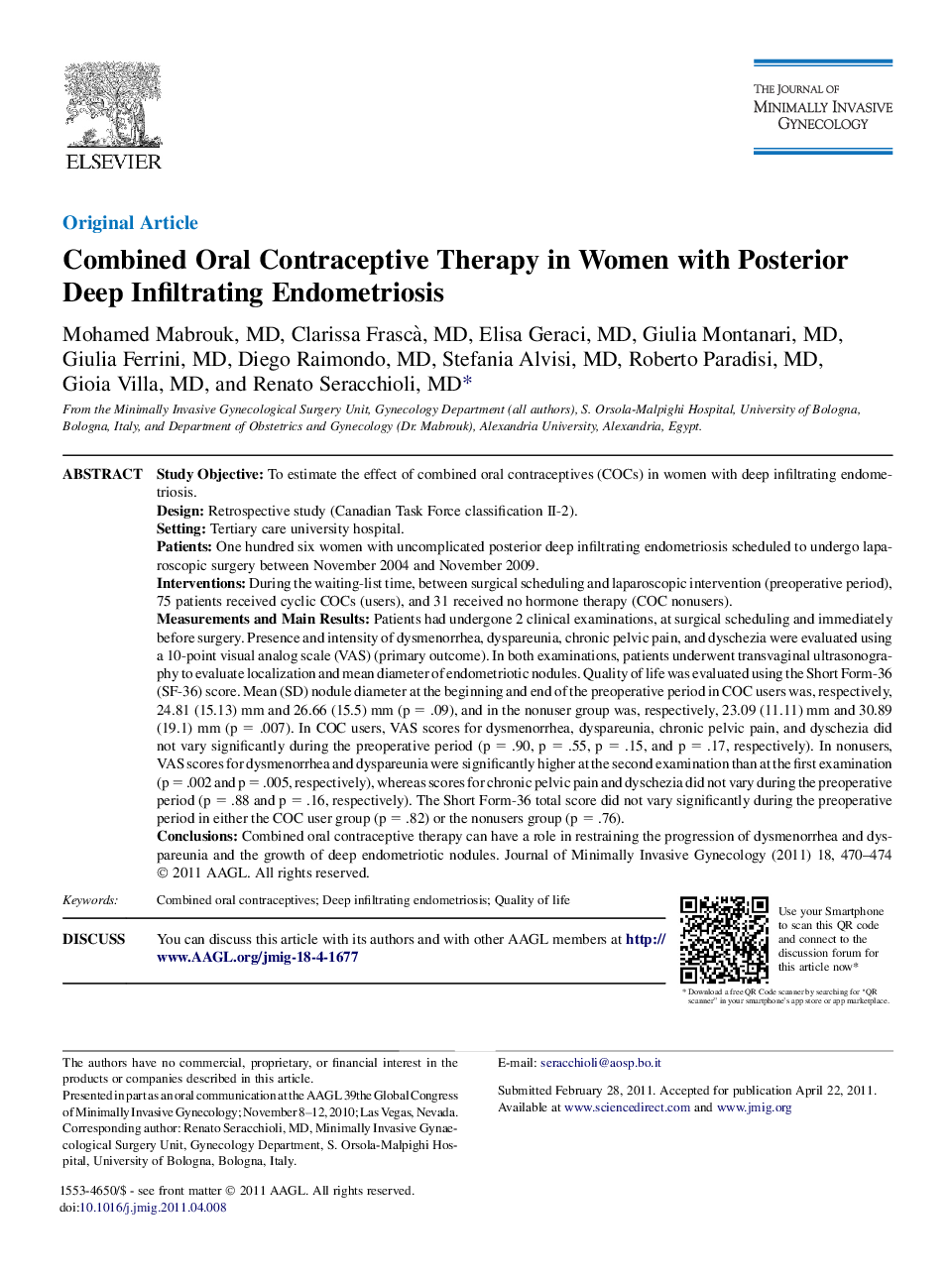| Article ID | Journal | Published Year | Pages | File Type |
|---|---|---|---|---|
| 3959134 | Journal of Minimally Invasive Gynecology | 2011 | 5 Pages |
Study ObjectiveTo estimate the effect of combined oral contraceptives (COCs) in women with deep infiltrating endometriosis.DesignRetrospective study (Canadian Task Force classification II-2).SettingTertiary care university hospital.PatientsOne hundred six women with uncomplicated posterior deep infiltrating endometriosis scheduled to undergo laparoscopic surgery between November 2004 and November 2009.InterventionsDuring the waiting-list time, between surgical scheduling and laparoscopic intervention (preoperative period), 75 patients received cyclic COCs (users), and 31 received no hormone therapy (COC nonusers).Measurements and Main ResultsPatients had undergone 2 clinical examinations, at surgical scheduling and immediately before surgery. Presence and intensity of dysmenorrhea, dyspareunia, chronic pelvic pain, and dyschezia were evaluated using a 10-point visual analog scale (VAS) (primary outcome). In both examinations, patients underwent transvaginal ultrasonography to evaluate localization and mean diameter of endometriotic nodules. Quality of life was evaluated using the Short Form-36 (SF-36) score. Mean (SD) nodule diameter at the beginning and end of the preoperative period in COC users was, respectively, 24.81 (15.13) mm and 26.66 (15.5) mm (p = .09), and in the nonuser group was, respectively, 23.09 (11.11) mm and 30.89 (19.1) mm (p = .007). In COC users, VAS scores for dysmenorrhea, dyspareunia, chronic pelvic pain, and dyschezia did not vary significantly during the preoperative period (p = .90, p = .55, p = .15, and p = .17, respectively). In nonusers, VAS scores for dysmenorrhea and dyspareunia were significantly higher at the second examination than at the first examination (p = .002 and p = .005, respectively), whereas scores for chronic pelvic pain and dyschezia did not vary during the preoperative period (p = .88 and p = .16, respectively). The Short Form-36 total score did not vary significantly during the preoperative period in either the COC user group (p = .82) or the nonusers group (p = .76).ConclusionsCombined oral contraceptive therapy can have a role in restraining the progression of dysmenorrhea and dyspareunia and the growth of deep endometriotic nodules.
